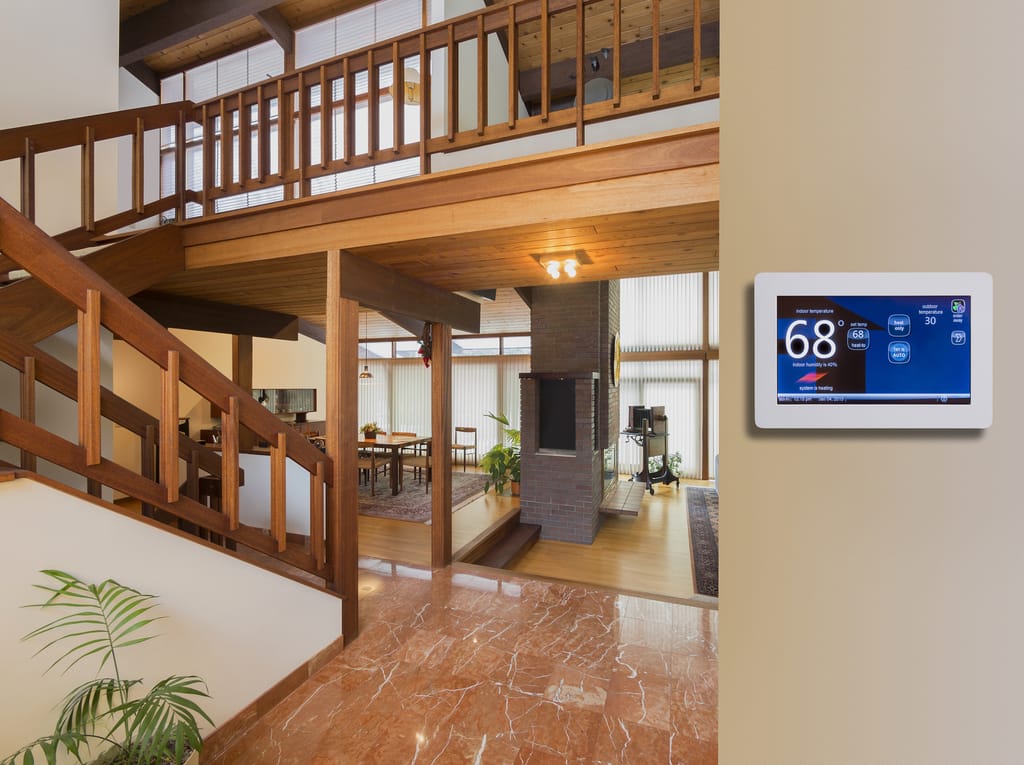What is the ideal room temperature for sleeping?
Are you having trouble sleeping at night? It could be because of the temperature in the room. Have you ever wondered what is the ideal room temperature for sleeping? The temperature of the room affects our comfort and quality of sleep.
The science
Research has found that the ideal room temperature for a good night’s sleep falls between 60 and 67 degrees Fahrenheit. This range of temperature is optimal for promoting sleep and minimizing disruptions throughout the night. The human body’s core temperature fluctuates throughout the day and night. This natural decrease in body temperature during nighttime hours is an important part of the sleep process. When the body’s core temperature is lower, it promotes feelings of sleepiness and helps to start a deeper sleep.
A room temperature that is too hot or too cold can interfere with this natural process and lead to poor sleep quality. A room temperature of 60 to 67 degrees Fahrenheit is ideal for promoting a restful sleep. Research has found that this range of temperature maintains the body’s core temperature at an optimal level and minimizes disturbances during sleep. This range of temperature helps to reduce the risk of overheating during sleep, which can lead to frequent awakenings. It is important to note that the ideal temperature range varies from person to person. If a room temperature of 60 to 67 degrees Fahrenheit does not feel comfortable for you, it is best to experiment with higher or lower temperatures until you find one that is most comfortable for you.

A comfortable night’s sleep
One of the most important factors in creating a comfortable sleep environment is the room temperature. Too cold or too hot can make it difficult to drift off to dreamland. When setting the temperature of your bedroom, there are a few key points to keep in mind. First, it is important to set the temperature at a comfortable level. The ideal temperature for sleeping is between 60-67 degrees Fahrenheit. This range is cool enough to keep your body in its natural temperature range, while still being warm enough to be comfortable.
Depending on the season and your personal preferences, you may find that a higher or lower temperature works better for you. In addition, it is important to keep your room as consistent as possible. Temperature fluctuations throughout the night can disrupt your sleep cycle, so aim for a consistent temperature throughout the night. To help keep the temperature consistent, consider using a programmable thermostat or a fan. Make sure your bedroom is well insulated, with no drafts or air leaks. This will help keep the temperature of your bedroom consistent and comfortable.
According to Experts…
Experts have identified a range of temperatures that can help you get the sleep you need. First, it is important to understand that your body temperature can affect your sleep. When your body temperature is too high, it can make it difficult for you to fall asleep, and if it is too low, it can make it difficult for you to stay asleep. Therefore, it is important to find a temperature that is comfortable for you, but not too hot or cold. The ideal temperature range for sleep is between 60 and 67 degrees Fahrenheit. Experts recommend keeping your room temperature at the lower end of this range for optimal sleep.
It is also important to consider the temperature of your bedding, as it should not be too hot or too cold. In addition, experts suggest that it’s best to keep the temperature in your bedroom consistent throughout the night. This means avoiding temperature fluctuations by keeping the windows shut at night, and avoiding any drafts that can make the temperature too cold or too hot. It is important to remember that everyone is different, and what works for one person may not work for another.

The impact of room temperature
Generally, the ideal temperature for sleeping is between 60 and 67 degrees Fahrenheit. This range creates a comfortable environment that can help us fall asleep faster, stay asleep longer, and wake up feeling refreshed. When the temperature of a bedroom is too high or too low, it can interfere with sleep quality in a variety of ways. A room that is too hot can cause sweating and discomfort, leading to difficulty falling asleep.
A room that is too cold can cause shivering and discomfort, also making it difficult to fall asleep. In either situation, fluctuations in temperature throughout the night can cause sleep disruption and prevent deeper states of sleep. Studies have found that when we sleep in a room with a temperature of around 65 degrees Fahrenheit, we experience the most restful sleep. This temperature is neither too hot nor too cold, and it allows us to remain comfortable throughout the night. Research suggests that this temperature range is associated with improved sleep quality and a greater sense of alertness the following day.
Benefits
Unfortunately, many of us struggle to get the rest we need because of a variety of factors. One of these is the temperature of the bedroom. If it’s too hot or too cold, it can make it difficult to drift off. Keeping the right room temperature is key to improving the quality of your sleep, promoting better health and well-being. The optimal temperature for the bedroom is between 60 and 67 degrees Fahrenheit. Warmer temperatures can interfere with the body’s natural circadian rhythm and make it difficult to drift off. If the room is too cold, it can cause restlessness and discomfort. It’s important to remember everyone’s ideal temperature is different, so it’s important to experiment to find what’s right for you.
The right temperature can have many benefits for your sleep. Keeping it cool can help you fall asleep faster and stay asleep longer. It can also reduce the risk of night sweats and improve the quality of your sleep. Keeping the room cool can also help to reduce the risk of certain health conditions, such as heart disease and stroke, as well as reduce stress levels. Maintaining the right temperature in the bedroom can also help to reduce energy costs. Setting the thermostat a few degrees lower than usual during the night can help to save money on heating bills. To ensure that you get a good night’s sleep, you should also take steps to ensure the room is dark and quiet.
Conclusion
We consider the ideal room temperature for sleeping to be between 60 and 67 degrees Fahrenheit, but this range may vary according to individual preference. Some people may find that they sleep better at lower or higher temperatures. It is important that bedrooms are kept at a comfortable temperature in order to ensure a good night’s sleep.
Reference
- Pacheco, D., & Pacheco, D. (2022, June 24). Humidity and Sleep. Sleep Foundation. https://www.sleepfoundation.org/bedroom-environment/humidity-and-sleep
- Pacheco, D., & Pacheco, D. (2023, March 2). The Best Temperature for Sleep. Sleep Foundation. https://www.sleepfoundation.org/bedroom-environment/best-temperature-for-sleep
- Team, F. H. (2021, December 20). What’s the Best Temperature for Sleep? Cleveland Clinic. https://health.clevelandclinic.org/what-is-the-ideal-sleeping-temperature-for-my-bedroom/
- WebMD Editorial Contributors. (2021, March 9). What’s the Right Room Temperature for a Baby? WebMD. https://www.webmd.com/baby/what-is-the-right-room-temperature-for-a-baby